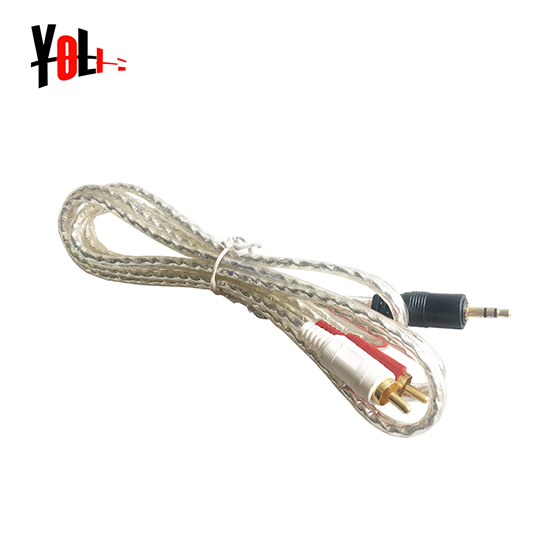Cable: When the phone converts the acoustic signal into an electrical signal and then transmits it to the switch via the line, the switch transmits the electrical signal directly to the other phone via the line for answering. The transmission line during this conversation is the cable. The main part of the cable is copper core wire. The core wire diameter is divided into 0.32mm, 0.4mm and 0.5mm. The larger the diameter, the stronger the communication ability; there are also divided by the number of core wires: 5 pairs, 10 pairs, 20 pairs, 50 pairs, 100 pairs, 200 Yes, wait, the logarithm mentioned here refers to the maximum number of users that the cable can accommodate; and it is divided by package, which I don't know much about. Cable: It is large in size, weight, and poor in communication ability, so it can only be used for short-range communication. Optical cable: When the phone converts the acoustic signal into an electrical signal and then transmits it to the switch via the line, the switch transmits the electrical signal to the photoelectric conversion device (converts the electrical signal into an optical signal) and transmits it to another photoelectric conversion device via the line ( Convert the optical signal into electrical signal), and then to the switching equipment, to the other phone to answer. The line between the two photoelectric conversion devices is an optical cable. It is said that it is only divided by the number of core wires, the number of core wires: 4, 6, 8, 12 pairs and so on.
Optical cable: It has the advantages of small size, weight, low cost, large communication capacity, and strong communication capability. Due to many factors, it is only used for long-distance and point-to-point (ie, two switch rooms) communication transmission. Their difference: The inside of the cable is copper core wire; the inside of the optical cable is glass fiber. Optical cable Communication optical cable is a kind of communication line in which a certain number of optical fibers compose a cable core in a certain way, with a sheath, and some with an outer sheath to realize optical signal transmission. Field tests have been carried out successively in Shanghai, Beijing, Wuhan and other places. Soon after, it was tried out as an inter-office trunk in the local telephone network. After 1984, it was gradually used for long-distance lines, and single-mode fiber was adopted. Communication optical cables have greater transmission capacity than copper cables, with long relay sections, small size, light weight, and no electromagnetic interference. Since 1976, they have developed long-distance trunk lines, intra-city relays, offshore and transoceanic submarine communications. , As well as the backbone of wired transmission lines such as local area networks and private networks, and began to develop into the field of user loop distribution networks in the city, providing transmission lines for fiber-to-the-home and broadband integrated service digital networks. A cable is usually a rope-like cable formed by twisting several or several groups of wires [each group of at least two wires]. Each group of wires are insulated from each other and often twisted around a center. The whole outer bread has a height. Insulating coating; especially the submarine cable first: there is a difference in material. Cables use metal materials (mostly copper, aluminum) as conductors; optical cables use glass fibers as conductors. Second: There is a difference in the transmission signal. The cable transmits electrical signals. Optical cables transmit optical signals. Third: There are differences in the scope of application. Cables are now mostly used for energy transmission and low-end data information transmission (such as telephone). Optical cables are mostly used for data transmission.
